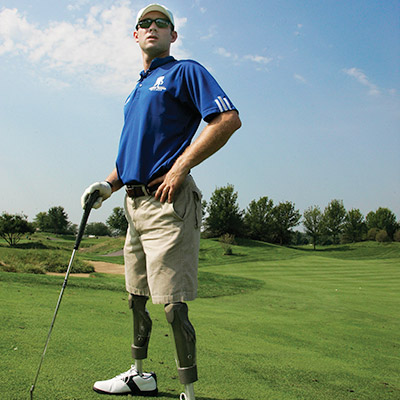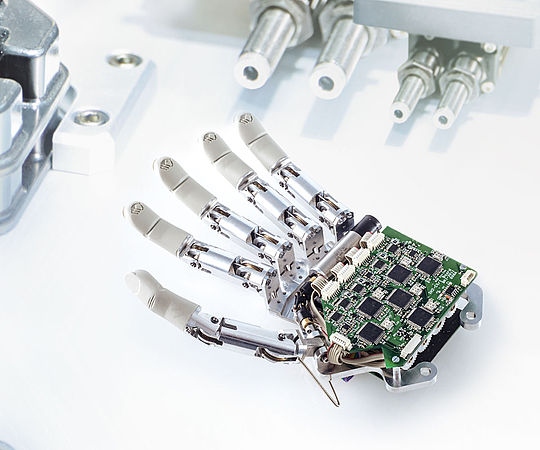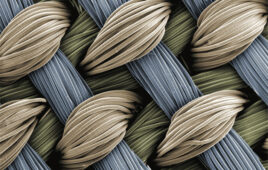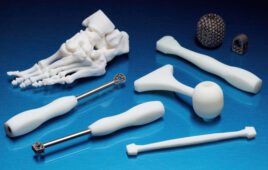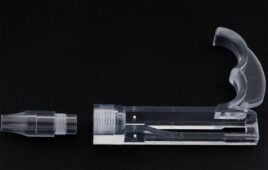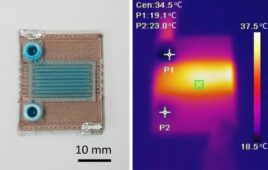You’ll find many prosthetic researchers who admit to drawing inspiration from the replacement hand Luke Skywalker received in one of the Star Wars movies. You may recall a light saber severing Luke’s hand in one scene. In the next, he’s flexing his new bionic fingers. The scene is science fiction for now, but prosthetic developers say such designs are not that far away.
The real-world trends in prosthetic design are more down to earth: Recent designs employ sophisticated microprocessors and actuators. Also, a wide variety of upper- and lower-extremity prosthetics are now available, depending on the recipient’s wishes. And the application of 3D printing is just getting started.
U.S. military veterans are providing a lot of the push for advances in technology. And thanks to U.S. Defense Dept. funding, recent prosthetic designs are quite sophisticated. For instance, though walking on flat ground is not difficult, walking down an incline, even a shallow one, can present a challenge.
“But recent microprocessor-controlled prosthetics for the lower extremities could have active control,” says Kevin Caroll, VP of Prosthetics at developer Hanger Inc. “For example, the microprocessor would signal the prosthetic to stiffen the fluid in the knee by closing off ports to generate more resistance from fluid going from one chamber to another. So the user need not think about what they are doing as they walk. The onboard computer is doing that and making constant adjustments.”
Even the process of getting fitted for a prosthesis has improved. Just 15 years ago, a veteran suffering a lost limb would have a prosthetic selected for him. “Today, that same veteran will have several prosthetics to choose from, because more manufacturers make the devices. Amputees are not just limited to one prosthetic knee or foot,” said Chief Prosthetic & Sensory Aid Service Bill Jones at the Louis Stokes Cleveland VA Medical Center. “The first time vets come to the hospital, they get a basic prosthetic to start walking and healing. As they progress, their limb heals and changes, perhaps calling for a different device. There is no limit to the number. If the vet shows an interest in swimming and needs some alternative, as long as he is showing a need, it is likely he will receive the device.”
An initial conversation usually starts with: What would you like to get back doing with the limb? “So if the vet is a fisherman, we can suggest several that are useful near water. Some request a shower leg or sports adaptive legs that accommodate golfing, even mountain climbing.”
A multidisciplinary approach is another recent trend. “In the amputee clinic we’ll have a physician and podiatrist along with someone from physical therapy, and sometimes an occupational therapist. Each vet is different so each limb is custom,” says Jones. An upper extremity patient is usually more difficult to treat because the hand is more complex than a foot. A functioning hand is hard to replicate – fingers articulate and provide tactile feedback. Myoelectric prosthetic provides some of that function. It includes sensors embedded in the socket that picks up electrical impulses of the muscles in the residual limb. “If the vet wants it and it is appropriate, he or she can get such technology. They don’t articulate the fingers instantly, but are getting better such as a better grasp function,” Jones adds.
For now, connecting nerves to motor controls is a stretch goal. “Several VA researchers are attempting upper extremity feedback, but not with each individual. It is more of a research project and less application engineering,” says Beth Orzell , CPO/Chief Orthotic & Prosthetic Lab at the VA Center.
Another trend: Upgrades. When the technology changes, vets can return to the hospital and be fitted with something new.
Three-D printing is also influencing prosthetic designs. For grown men, a 3D printer can help replace a missing a finger or part of a finger. “This is exciting and new because it allows more customization,” says Orzell. One experiment printed feet for a patient, but the printed material is not yet durable enough for a long-term application.
However, there are applications in which 3D printing is paying off big time: Printing arms for children born without them. As with veterans, the trends are toward customization, increasing sophistication, and much lower costs.
Dominique Courbin, Director of Production with Limbitless Solutions, says there are about 3,000 children born in the U.S. each year without an arm. Courbin got involved with this effort when he was a mechanical engineering student. One project was to print a finger or two for a child at no cost. But it turned out the child was missing his arm. That changed the team’s focus. Still, the 3D printed arm worked so well, Courbin and his colleagues formed a more formal organization, Limbitless, to repeat the success. They have, about 25 times.

All three kids on the right are sporting 3D printed arms from Limbitless. If Winter, the dolphin, could wave his tail, you’d see that it too is a 3D printed version. The version on the left provides an example of what is possible from a 3D printer and a little inspiration.
“We wanted to give away the arm at no cost to a family, so it had to be fairly inexpensive,” says Courbin. “It had to be useful. We wanted the prosthetic controlled by the same arm it was servicing.” In his design, a cable runs along the length of each finger and ties into a servomotor. Electrodes on the upper arm sense when the child flexes his or her muscles and signals motors to open or close the hand. Courbin says the design is not complex because a goal was for the child and family to quickly adapt to the arm.
Cost was the other issue. An insurance company may pay up to $40,000 for a complex prosthetic. Limbitless produces them for just $350. And as with veterans, the kids want something customized, so they can suggest bold insignias and bright colors to reflect their personality and make the arms theirs alone.

